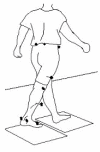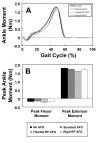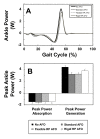Patient specific ankle-foot orthoses using rapid prototyping
- PMID: 21226898
- PMCID: PMC3024934
- DOI: 10.1186/1743-0003-8-1
Patient specific ankle-foot orthoses using rapid prototyping
Abstract
Background: Prefabricated orthotic devices are currently designed to fit a range of patients and therefore they do not provide individualized comfort and function. Custom-fit orthoses are superior to prefabricated orthotic devices from both of the above-mentioned standpoints. However, creating a custom-fit orthosis is a laborious and time-intensive manual process performed by skilled orthotists. Besides, adjustments made to both prefabricated and custom-fit orthoses are carried out in a qualitative manner. So both comfort and function can potentially suffer considerably. A computerized technique for fabricating patient-specific orthotic devices has the potential to provide excellent comfort and allow for changes in the standard design to meet the specific needs of each patient.
Methods: In this paper, 3D laser scanning is combined with rapid prototyping to create patient-specific orthoses. A novel process was engineered to utilize patient-specific surface data of the patient anatomy as a digital input, manipulate the surface data to an optimal form using Computer Aided Design (CAD) software, and then download the digital output from the CAD software to a rapid prototyping machine for fabrication.
Results: Two AFOs were rapidly prototyped to demonstrate the proposed process. Gait analysis data of a subject wearing the AFOs indicated that the rapid prototyped AFOs performed comparably to the prefabricated polypropylene design.
Conclusions: The rapidly prototyped orthoses fabricated in this study provided good fit of the subject's anatomy compared to a prefabricated AFO while delivering comparable function (i.e. mechanical effect on the biomechanics of gait). The rapid fabrication capability is of interest because it has potential for decreasing fabrication time and cost especially when a replacement of the orthosis is required.
Figures










References
-
- Chelule K, Coole T, Chesire D. Proceedings of the 2000 Conference on Time Compression Technologies. Cardiff International Arena, UK; 2000. Fabrication of medical models from scan data via rapid prototyping techniques.
-
- CC Kai, Meng CS, Ching LS, Teik LS, Aung SC. Facial prosthetic model fabrication using rapid prototyping tools. Integrated Manufacturing Systems. 2000;11(1):42–53. doi: 10.1108/09576060010303668. - DOI
-
- Hieu LC, Zlatov N, Sloten JV, Bohez E, Khanh L, Binh PH, Oris P, Toshev Y. Medical rapid prototyping: applications and methods. Assembly Automation. 2005;25(4):284–292. doi: 10.1108/01445150510626415. - DOI
-
- Zollikofer CPE, Ponce de Leon MS. Tools for rapid prototyping in the biosciences. IEEE Computer Graphics and Applications. 1995;15(6):48–55. doi: 10.1109/38.469515. - DOI
-
- Noorani R. Rapid Prototyping: Principles and Applications. John Wiley & Sons Inc. Hoboken;; 2006.
MeSH terms
LinkOut - more resources
Full Text Sources
Other Literature Sources
Medical
Miscellaneous

